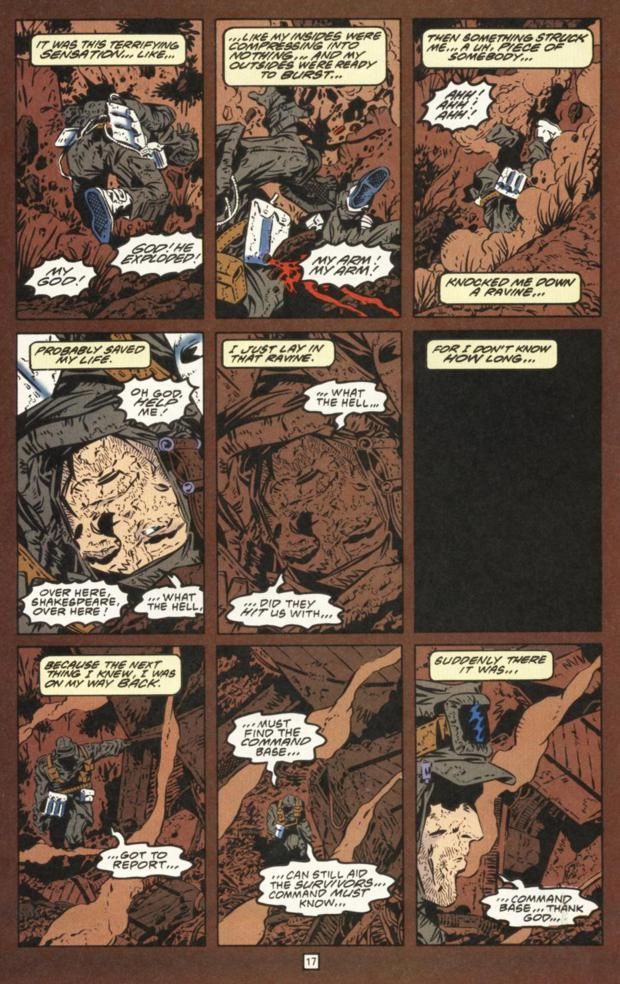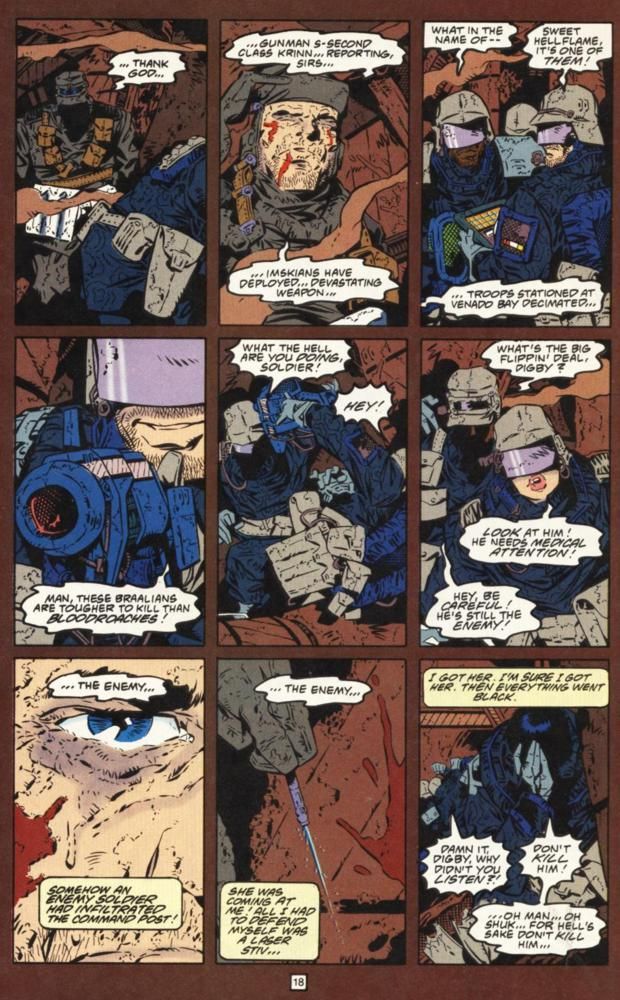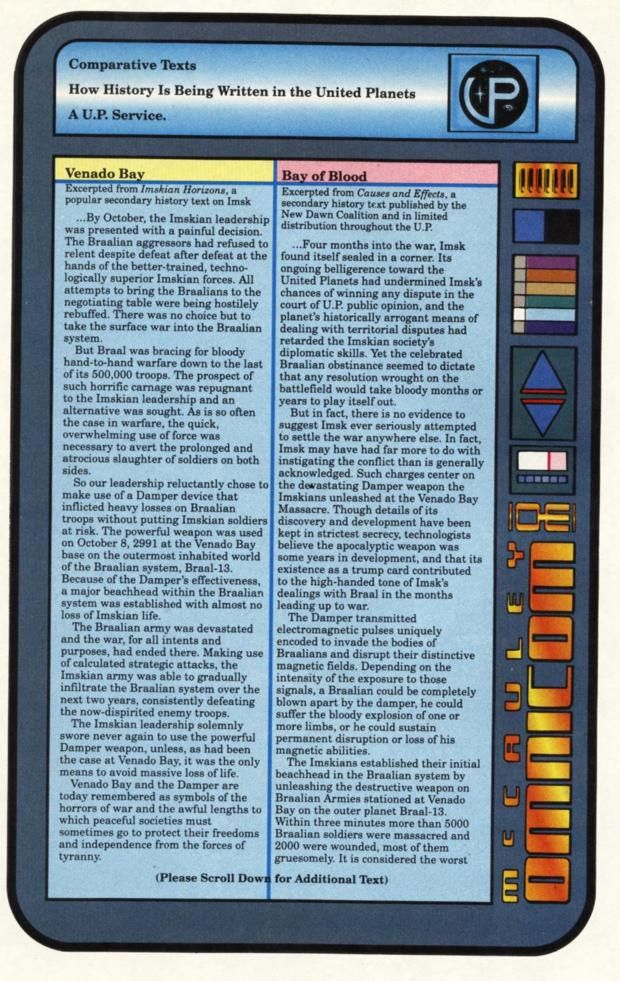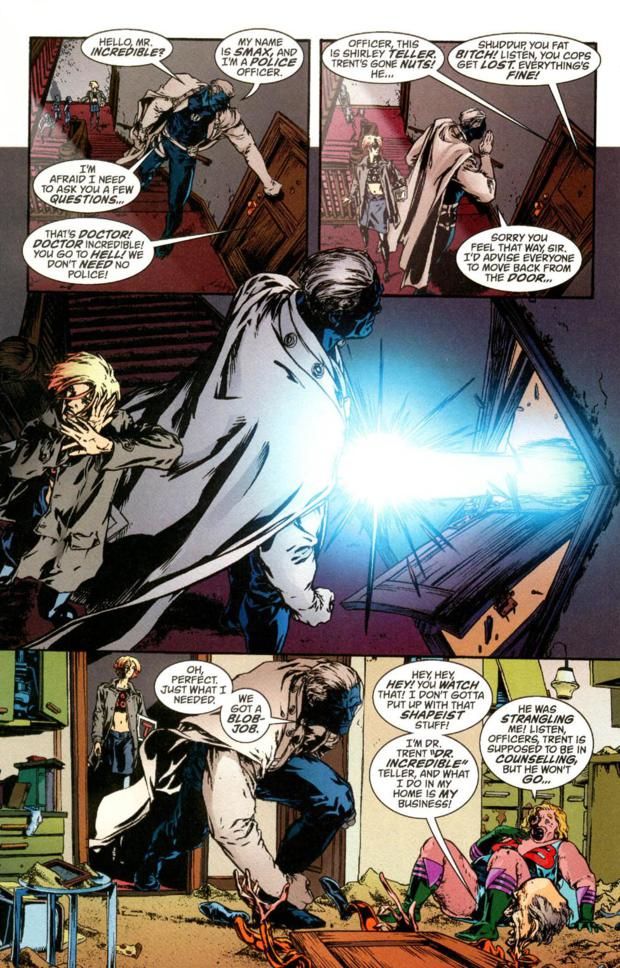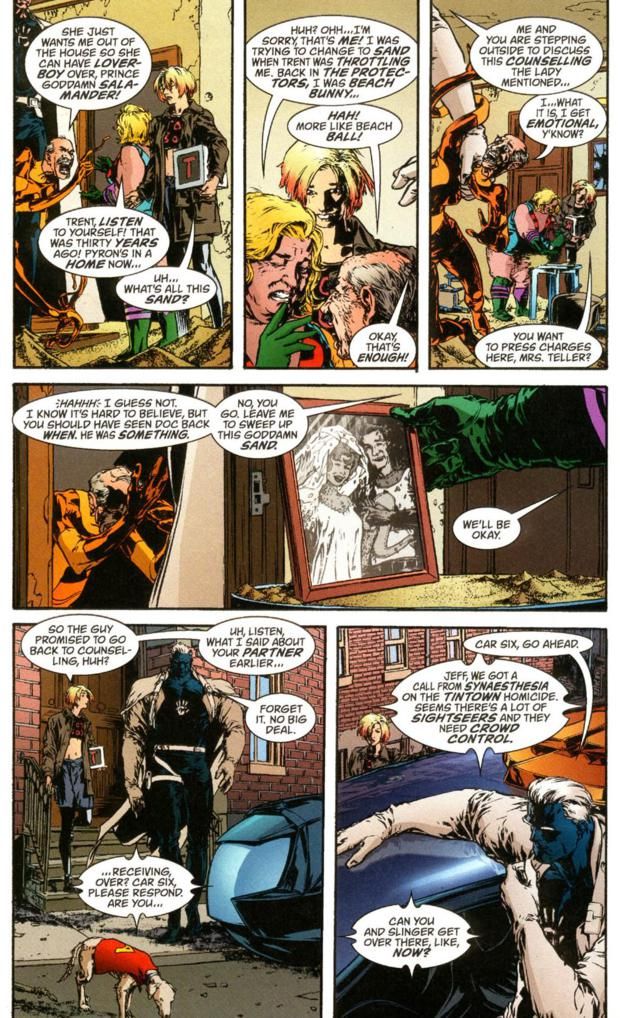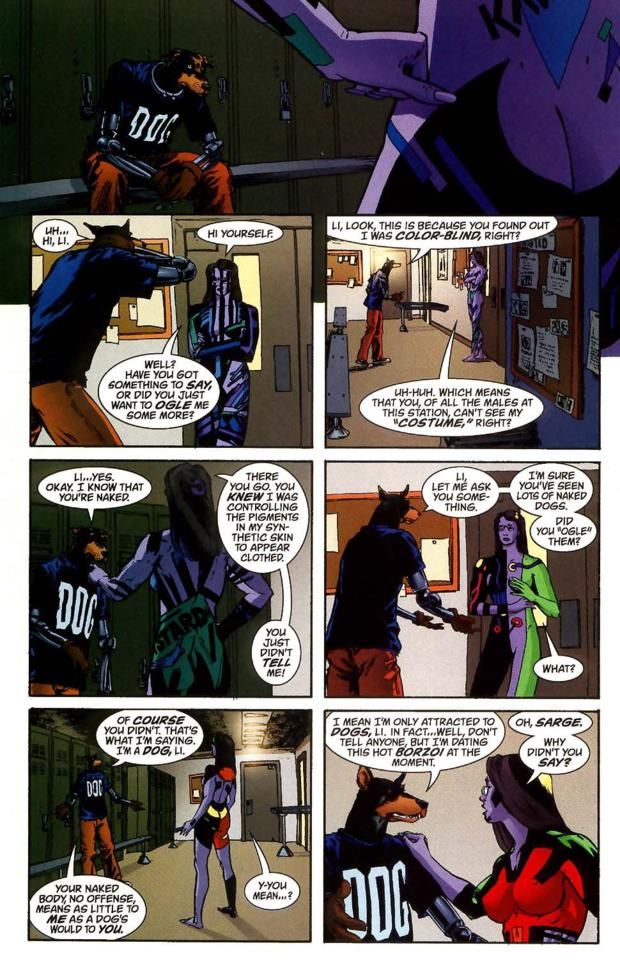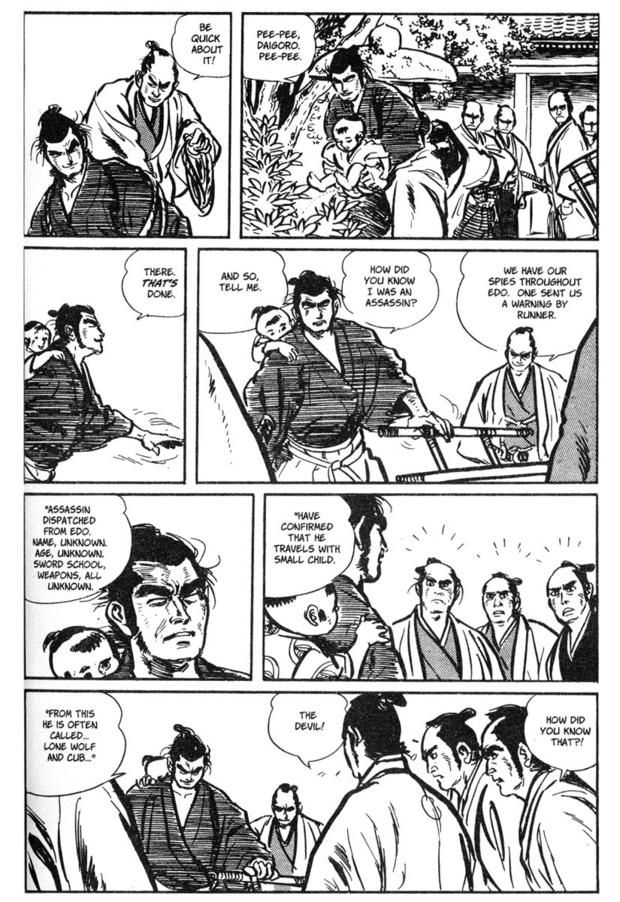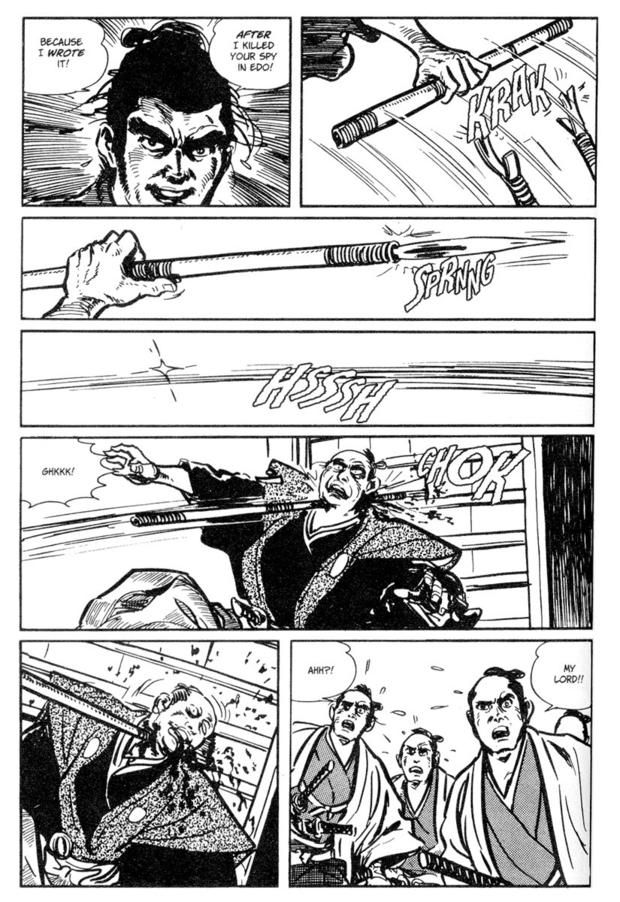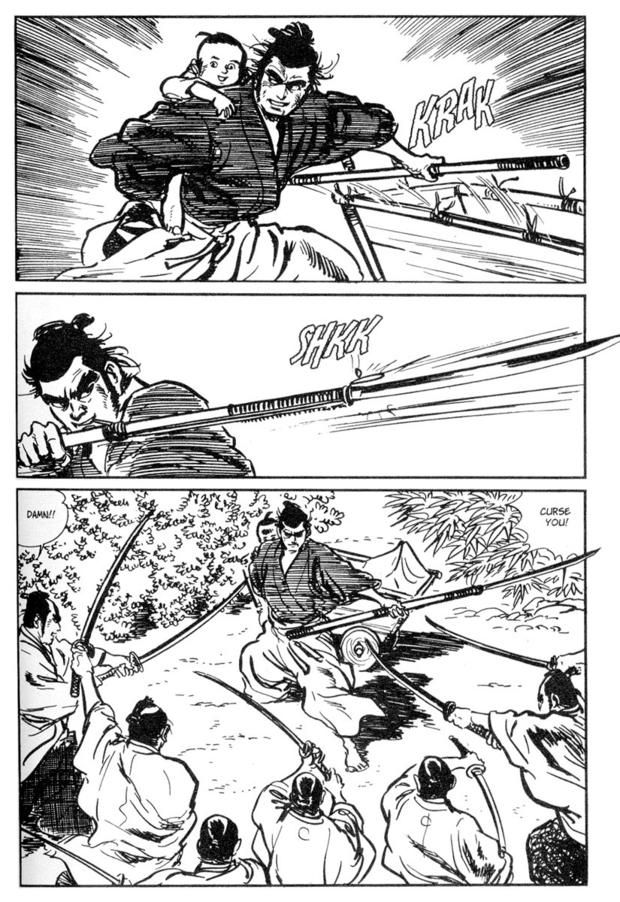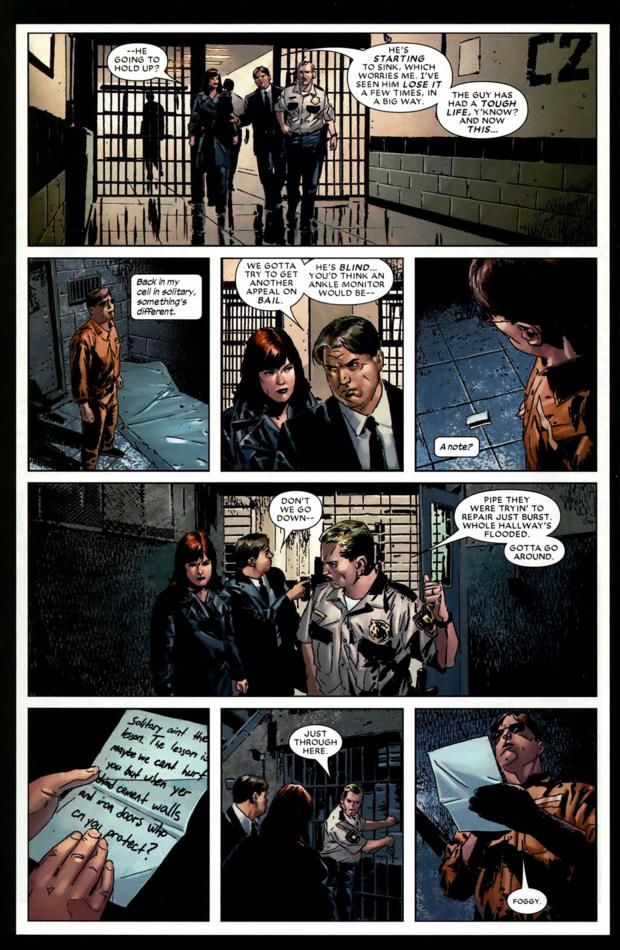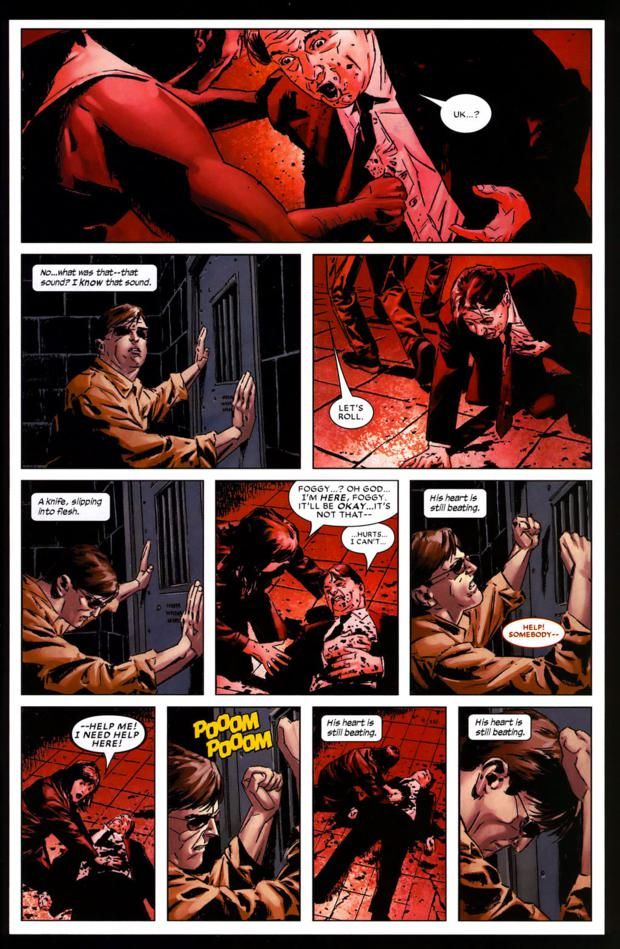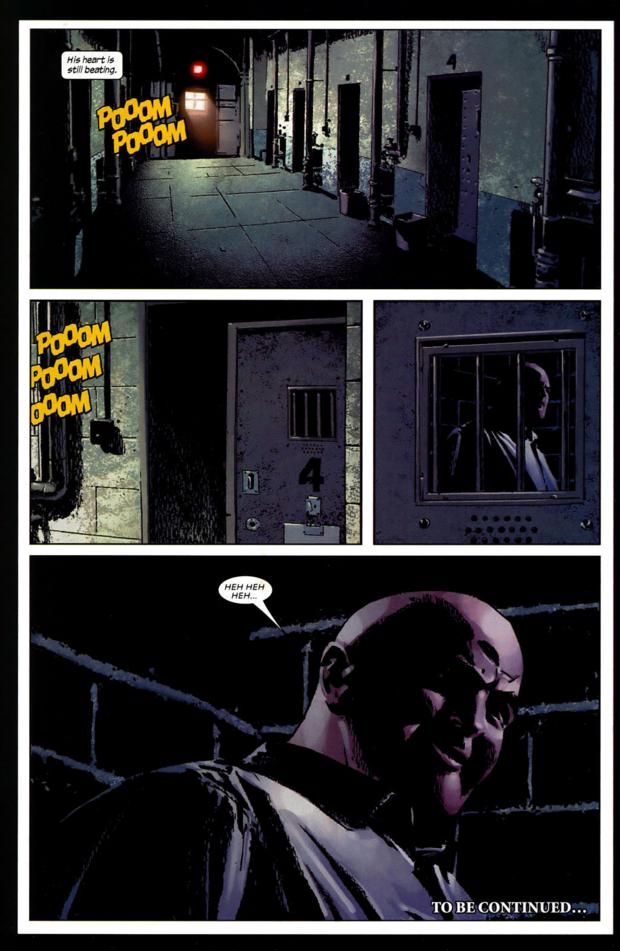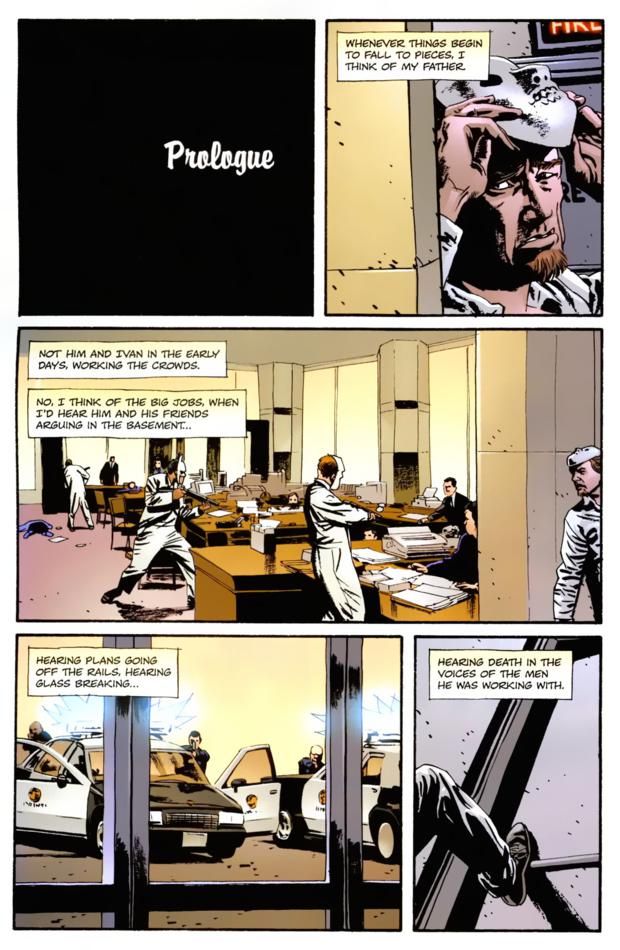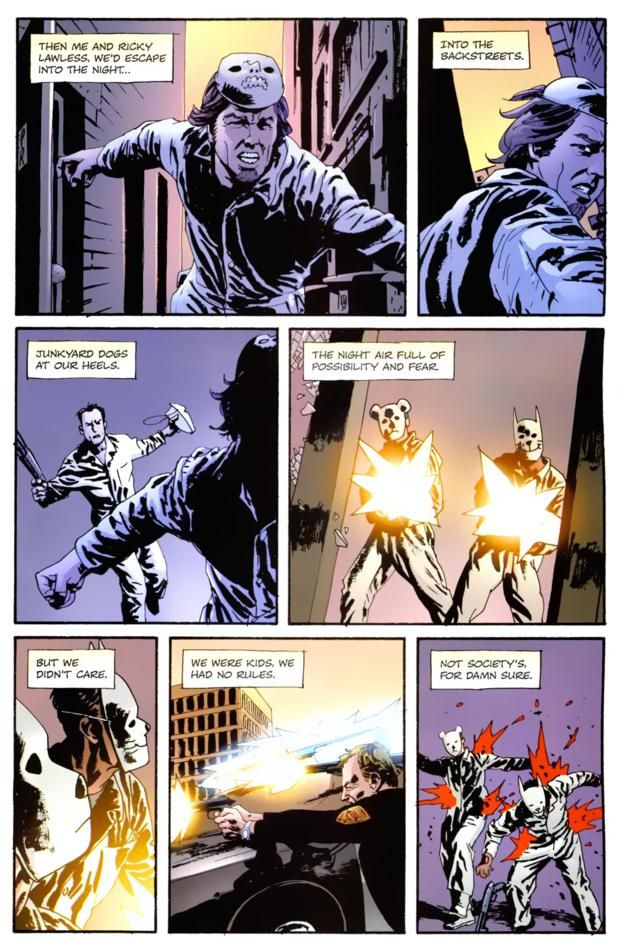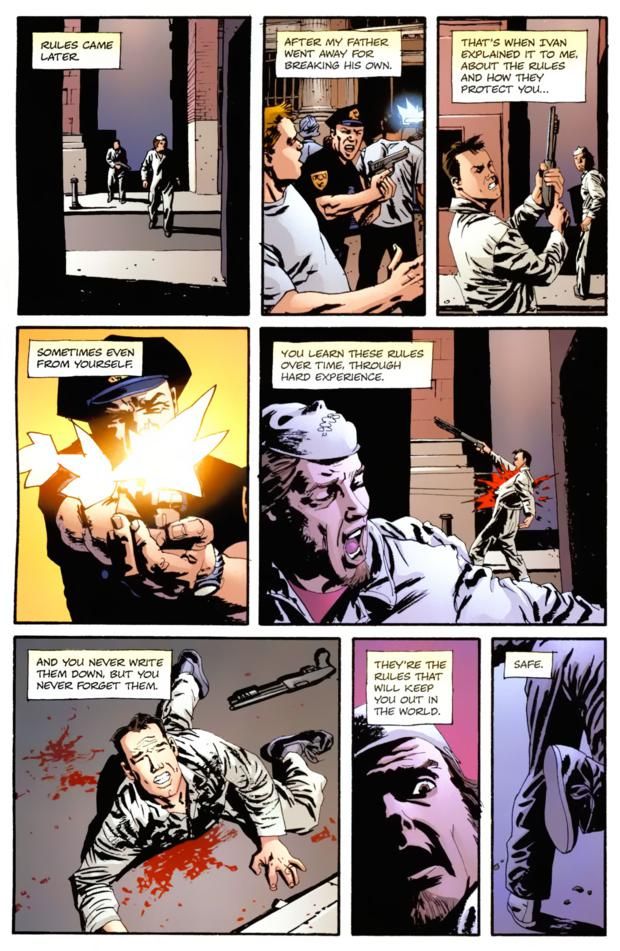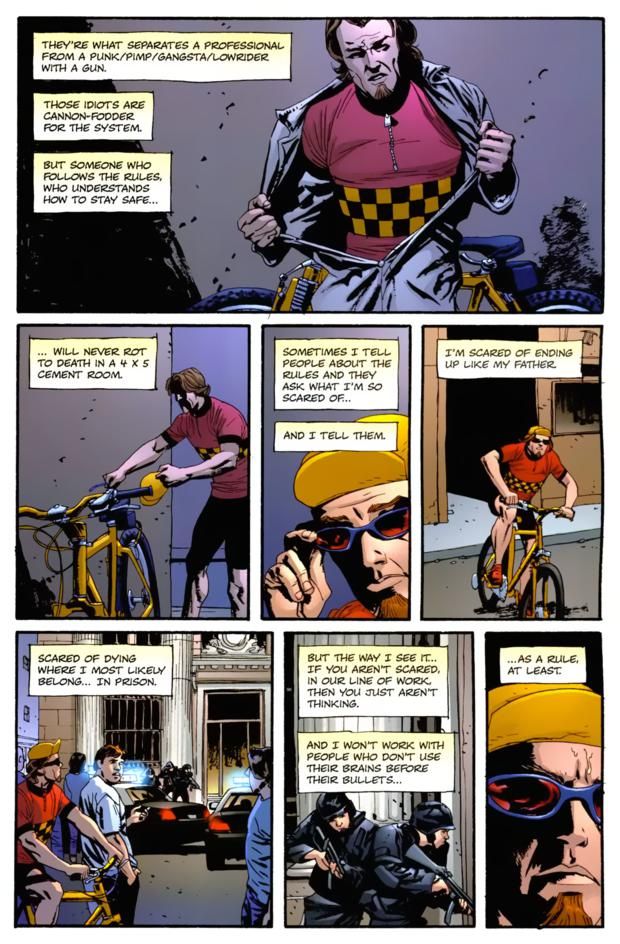You voted, now here are the results of your votes for your favorite comic book creator runs of all-time! We'll be revealing five runs a day for most of the month. Here is a master list of all of the runs revealed so far.
Here's the next five runs...
85. Keith Giffen and Tom and Mary Bierbaum’s Legion – 104 points (2 first place votes)
Legion of Superheroes #1-38, with the Bierbaums taking over until #50
When Keith Giffen rejoined Paul Levitz on Legion of Superheroes in 1988, the book was already in a slightly darker place, but it only got darker. Levitz and Giffen really began to stress that the Legionnaires were getting older. However, nothing prepared readers for what they were about to experience when Levitz left the book at the closing of that volume of Legion.
When Legion of Superheroes re-launched with a brand-new #1, Giffen was now the plotter of the comic as well as the artist, and he brought scripters (and long time Legion fans) Tom and Mary Bierbaum and finisher Al Gordon with him. And the book had moved forward five years into the future.
The world of the Legion was now a grim, desolate place, and the days of young men and women in colorful costumes were long gone. Instead, they were now, well, five years older, and no longer in costume – yet they all remained heroes. The story was an extremely ambitious look at a bunch of grizzled characters somehow coming together to reform some semibalance of the Legion they all once cared so much about.
One of the most notable aspects of the comic was how DENSE each issue was. Giffen used the nine-panel grid to great effect, making each issue filled with so much story that it would have easily twice as much stories as most other comics of the time (and that’s not even counting the pages at the back of the issues, which they used to fill in readers on what was going on in the Legion world).
Perhaps the most impressive thing about this run to me, personally, was how they dealt with having to come up with a brand-new origin for the Legion (one sans Superboy, who was off-limits), without it really being too confusing.
The comics were dark, but they were also filled with humor and great character work.
One of the fascinating aspects of the story was the way Giffen would use back-up pages like Alan Moore used back-up pages in Watchmen. He would have documents that would elaborate on the stories within the comics. For instance, one of the biggest plots in the comic was the war between Braal (home to Cosmic Boy) and Imsk (home of Shrinking Violet). During the war, Imsk used a weapon on Braal soldiers, killing many of them and incapacitating others. Cosmic Boy (Rokk) survived, but he lost his powers.
In one issue, they show the events (including the revelation that Violet's lost eye came as a result of Rokk)...
Later, they show dueling historical takes on the event...
Awesome.
Eventually, Giffen introduced apparent clones of the original Legion, still in bright and colorful costumes, and his original plan was for them to revealed to be the ACTUAL Legion, and Giffen’s older Legion would get their own spin-off book. That fell through, and Giffen departed the title.
The Bierbaums stayed on until #50, and tied up a lot of loose threads.
Giffen drew the book at first and was followed by Jason Pearson, who did a wonderful job in his first (and only?) regular penciling assignment for Marvel and DC.
84. Alan Moore, Gene Ha and Zander Cannon's Top 10 – 105 points (1 first place vote)
Top 10 #1-12, Top 10: The Forty-Niners OGN, Smax #1-5
Alan Moore's Top 10 is about a world where the police have to police superheroes. However, in the comic's notable twist, Top 10 is about police officers who ARE superheroes, which is normal enough, as nearly EVERYone in the city of Neopolis has superpowers and costumes, from the cops to the robbers to the civilians.
The artwork was by Gene Ha and Zander Cannon, who drew the 12 issues series together (Cannon did layouts and Gene Ha did finishes on the regular series) and then each drew one of the two spin-offs by themselves (Ha handling the Forty-Niners graphic novel, which tells the history of Neopolis and Cannon taking Smax, a spin-off starring one of the cops from Top 10).
Top 10 refers to the 10th Precinct, which is who the book follows, in a riff on Hill Street Blues, only with superheroes.
Moore uses the opportunity of a city filled with superheroes to make many pointed observations about superheroes, mostly comical ones. However, the book is also a character-driven comic, as well, it is just that the characters are absolutely bizarre, so their dramas are, as well. Moore, though, never treats their bizarre dramas as anything but serious problems, which gives the book a truly human feel in an otherwise superhuman environment. Like this domestic dispute between two familiar superheroes from the 1960s...
There was a lot of humor in the series, too. Like this one character has powers where she is basically naked at all times, but she can hide it by manipulating the colors on her skin. When she realizes that the sergeant of the precinct, a talking dog, is color blind, she is outraged. This leads to a fascinating discussion between the two...
Of course, later in that issue, we learn that the Sergeant was lying about being attracted to dogs and just said it to get her off his back. Pretty darn funny. As are the various comic book homages that are scattered throughout the series.
There was a sequel to the series published in 2005, but Moore was not involved.
83. Kazuo Koike & Goseki Kojima’s Lone Wolf and Cub – 106 points (5 first place votes)
Lone Wolf & Cub Vols. 1-28
Lone Wolf & Cub (or as it was originally known in Japan, Kozure ÅŒkami) is a straightforward tale.
Ogami Itto's wife and most of his family was murdered by the Yagyu clan so, along with his young son (the only survivor), Daigoro, he must gain his revenge upon the Yagyu clan, and its evil leader, Yagyu Retsudo. And along the way, hilarity ensues.
So with such a straightforward tale, for it to be so acclaimed, you know that the story and the art must be great, and it really is.
The late, great Goseki Kojima's artwork was an inspiration to many artists, with Frank Miller probably being the most notable (and think about it, if you inspired Frank Miller's style, think of all the artists who were then inspired by Miller...), and his depictions of the stark reality of violence is stunning.
Kazuo Koike's story is quite impressive, especially the way he shows how evil the circle of violence between the two clans is, leading to the memorable conclusion to the series (which lasted six years, between 1970 and 1976).
82. Ed Brubaker, Michael Lark and Stefano Gaudiano’s Daredevil – 107 points (2 first place votes)
Daredevil (Vol. 2) #82-119, Daredevil #500 (Lark penciled all but five of the issues and Gaudiano inked all but three of them - and that's counting the fact that Lark inked himself on the very first issue)
The great Daredevil stories are often remembered by how they begin, as Frank Miller made clear with both the beginning of his acclaimed run as writer/artist on the series as well as the legendary first issue of "Born Again." Brian Michael Bendis followed suit with his first issue and here, Ed Brubaker matches both fellows with the first issue of his run, where Brubaker had the unenviable task of not only following Bendis' acclaimed run on the title, but opening his run with Matt Murdock in prison after the end of Bendis' run.
Check out wonderfully Brubaker captures the inherent drama of Matt not being able to help his friend while in prison...
What an opening.
Brubaker and artists Michael Lark and Stefano Gaudiano handled the powerful opening arc of the series well, as Murdock has to make his way through prison life while forces are conspiring to make sure that he does not live long enough to actually stand trial for his "crimes" as Daredevil.
Once that story is over, Brubaker spends a nice chunk of time settling the situation that Bendis left Daredevil in through a "Daredevil on the run" arc, but he does so in a way that does not feel like simply rote "okay, everything is back to normal" fashion.
Once things are back to some semi-balance of normality, Brubaker then puts Murdock through the paces in some dark storylines that push Daredevil practically to the edge of sanity.
This run heavily evokes the feel of a number of 1970s cult classics, with a noir flourish. Lark and Gaudiano bring the book an "old school" feel while being amazingly technically proficient artists. They tell a story extremely well.
A notable addition to Daredevil's supporting cast during this run was Marvel's little known private investigator character, Dakota North. Brubaker does wonders with her as a character, making her a vital part of the book. The relationship between North and Murdock help drive a great deal of the plots in the series.
Brubaker also introduced a new female Bullseye character (Lady Bullseye, natch). What should not be left unheralded is the work of the cover artists on this series. Tommy Lee Edwards got things off to a great starting with some stunning covers and then a new addition to Marvel, Marko Djurdjevic, set the world on storm with his epic painted covers. Daredevil had some of the best covers going for years between the two men.
81. Ed Brubaker and Sean Phillips’ Criminal - 108 points
Criminal #1-10, Criminal Volume 2 #1-7, Criminal - The Sinners #1-5, Criminal - The Last of the Innocent #1-4
Criminal is interesting in that its current format of a series of mini-series was really what the series was all about even before it officially went to the current format. That is, each story arc was, in effect, its own little mini-series. It all takes place in the same shared continuity, though, just each arc spotlights a different criminal.
As to the plot of Criminal, it is exactly what its title says it is - a book about criminals. Brubaker and Phillips excel at producing high quality crime stories and Criminal is a perfect outlet for such stories.
The first arc, Coward, was about a crook who was one of the best in the business, mostly because he always knew when to run. Here is the amazing opening scene introducing him to the audience...
Of course, the story deals with said "coward" being forced into a situation that he COULDN'T run away from. That really describes a lot of the stories in Criminal, compelling characters being forced into tough situations where they must react a certain way to survive (or not) and the end result can often be heartbreaking but it is always compelling.
And the artwork, wow...Sean Phillips is just a master of noir. He can create a perfect scene like few artists working in comics today. And his character work is outstanding.
The most recent Criminal arc was one of the series' most acclaimed, as Brubaker and Phillips created characters based on classic Archie characters (although, really, just the archetypes of the characters, who have been around in media before they were Archie characters) and then put them through the wringer, exploring the idea of how powerful of a drug nostalgia can be while showing that "the good ol' days" were rarely as good as you remember them, and you can't force your way back to such an ideal. Phillips rocked with his stylized flashbacks of the characters (in a not quite Dan DeCarlo style, but clearly evoking an innocent worldview, even as they make it clear that these characters were NEVER "innocent").


